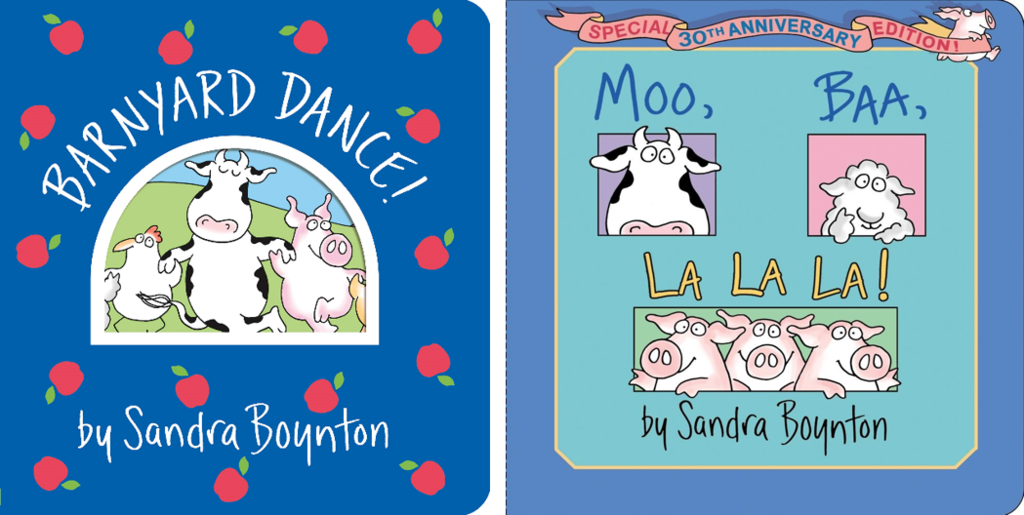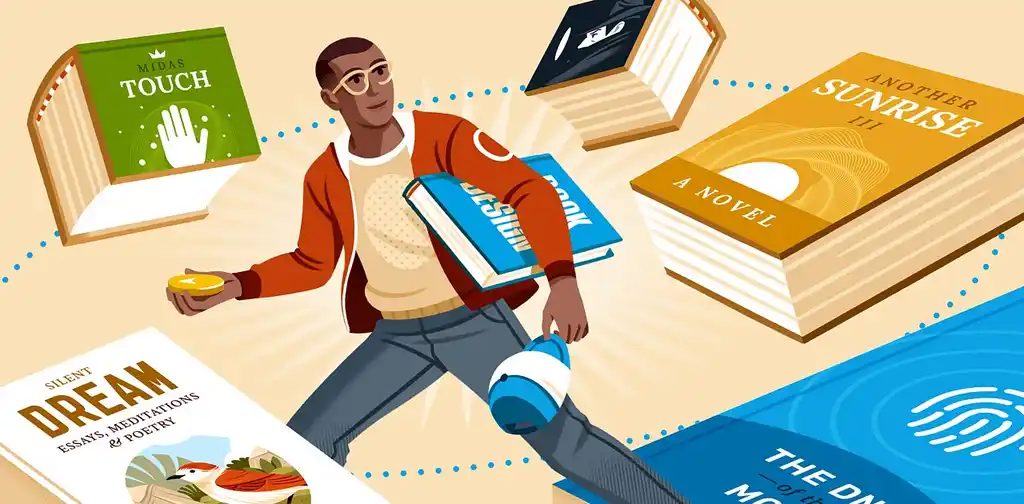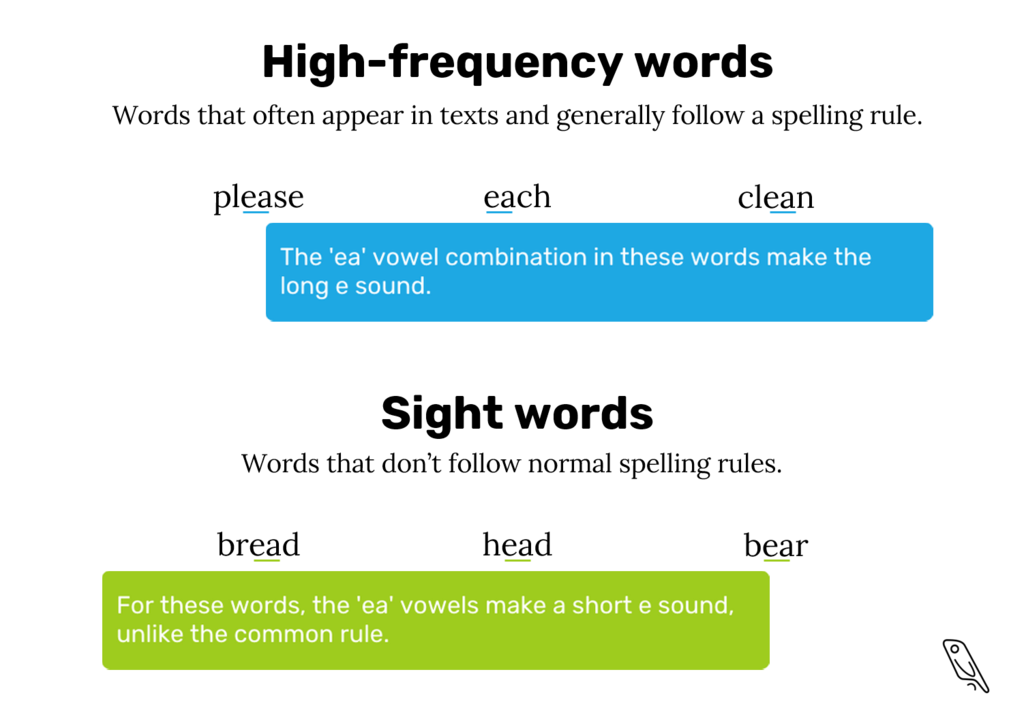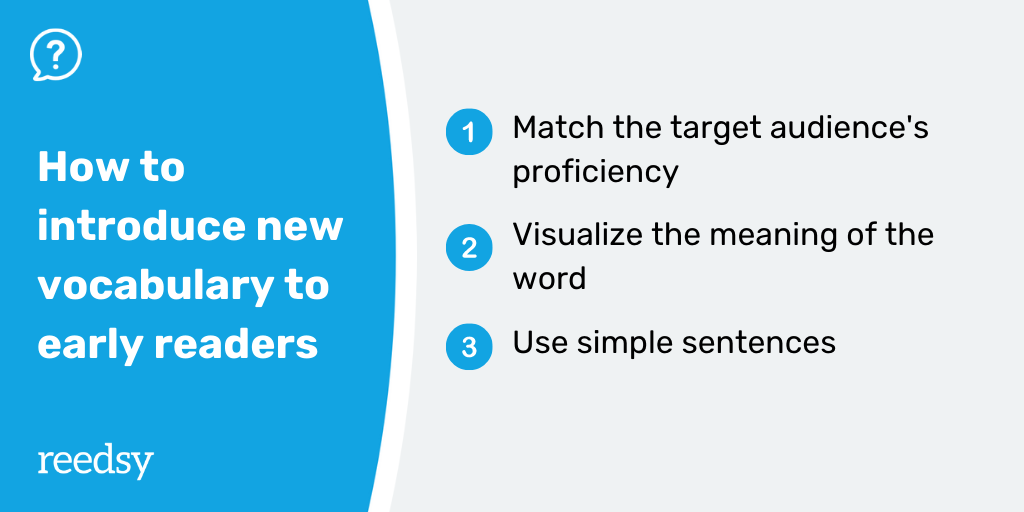Blog •
Last updated on May 14, 2021
How to Edit for Early Readers with Editor Kate Moening
About the author
Reedsy's editorial team is a diverse group of industry experts devoted to helping authors write and publish beautiful books.
More about the Reedsy Editorial Team →
 Kate Moening is an editor, researcher, and former educator. She’s edited more than 80 books for K-8th grade and specializes in literature for beginning and struggling readers. Kate has also worked in magazines and book events and loves helping indie authors get started. She’s currently based in the Twin Cities.
Kate Moening is an editor, researcher, and former educator. She’s edited more than 80 books for K-8th grade and specializes in literature for beginning and struggling readers. Kate has also worked in magazines and book events and loves helping indie authors get started. She’s currently based in the Twin Cities.
Books for early readers are deceptively tricky. The words are mostly short, and there aren’t that many of them—but for readers who are mastering basic literacy, those small words are doing a lot.
Content organization, sentence structure, word choice, and formatting are just a few of the tools you can use to edit great stories that support beginning readers.
Structure the books to help beginners
Let’s start with the big picture: How is your author’s book organized? What themes emerge? Structural elements like these can either muddle or ease the work of reading.
Keep it simple
Familiar themes and clear, predictable organization lets readers focus their efforts on sentences and words. A story about families or animals will be easier to understand than one about politics or rocket science. A chronological book will be easier than one with flashbacks; a story with fewer characters or settings will be easier than one with many scene changes.

Advise your author to keep their target readers in mind and avoid complicated plots.
Introduce information with care
Look for information clusters. Each turn of the page brings new information, words, and pictures. Can your author keep new or related information on a single page spread? When you’re first learning to read, it can be hard to both decipher a new page of text and also retain complex ideas from the pages before.

Make connections between titles
If you’re working with an author on a series, you can also help them improve predictability across titles. Maybe chapter titles repeat or share similarities across books, or perhaps similar topics appear on the same page in each title. In other words, you want books in a series of books for early readers to have some consistency in structure which children can familiarize themselves with. This leaves them room to understand the words themselves.

JOIN REEDSY
Find exciting new projects
We connect publishing professionals with our community of 1,500,000 authors.
Use strategic vocabulary
High-quality texts for beginning readers break some conventional writing and copyediting rules, especially when it comes to word choice. Be strategic in your edits and talk to authors about how to make each word count.
Intentional repetition
For early readers, it can be okay to repeat the same word or phrase more than once in a short span.
“When students read the repetitive and predictable sentences, words, and phrases in a text,” writes researcher Maria S. Murray, “...[it] in turn motivates them to reread the texts, and when they do, they attend to the meaning of the words, how words go together, and their letter/sound patterns.”
It feels good to practice and succeed at something new! You can help authors create those encouraging moments of success for young readers by intentionally incorporating repetitive words or sounds.
💡 Pro-tip: Sometimes it’s also helpful to trade the most specific word for a less exact, but more easily readable word or phrase.
High-frequency words and sight words
High-frequency words and sight words are some of the most common in beginner books (they're also frequently used in English in general). The most famous word sets for early readers are the Fry and Dolch lists. Choosing a few of these words to repeat can help focus a manuscript and reinforce reading skills.
High-frequency words generally follow spelling rules and can be decoded, but they may follow rules that young readers haven’t learned yet. Take please, each, and clean — a reader could sound them out if they know that “ea” generally makes an “ee” sound, though a beginning reader may not know this rule yet. Which is why you should encourage your author to repeat them and thus introduce the rule.
Sight words are common words that don’t follow normal spelling rules (One study found that irregularly spelled words made up over half of all words that beginning readers encounter!). Readers have to memorize sight words, because they can’t decode them. Bread, head, and bear are all sight words — they also feature “ea,” but they're exceptions to the rule because they don’t make an “ee” sound.

Avoid homophones
It can be just as important to know what you’re not going to use, too. “Spelling can be difficult enough for many students so I never give the students words like “their” and “they’re” on the same week,” says pre-K teacher Brian Smith. If a text uses one version of a word, you can encourage authors to avoid or minimize similar words and homophones.
Sounds and letter combinations
Early readers often use letter combinations and sounds to decode unfamiliar words. You can suggest authors choose particular sounds to repeat. An author might want to highlight words “th” and “ie” sounds, and you can help find ways to incorporate words with those sounds throughout the text.
Selective large words
Introducing new vocabulary can be helpful for learning, Murray explains, but too many big words can impede literacy. As such, you can help authors pace out complex vocabulary.
Now, how much is too much? Part of what makes early reader books so tricky is that there’s no standard for how much new vocabulary is optimal.

Some of this depends on an author’s target audience. Struggling readers would probably do better with fewer long words with higher repetition. More proficient readers can tackle more new words at a time.
Imageability is another consideration: A big word that connects to a concrete object might be easier for early readers than a word about something intangible. “A word such as ‘butterfly’ [is] easier to learn and remember than ‘hopeful’ because it conjures a mental picture,” Murray says. If the author wants to focus on a specific, more abstract concept—such as “hope”— you might want to cut down on new, longer words. Oftentimes, it comes down to helping the author identify the vocabulary they absolutely need to add new information, and find simpler synonyms for less crucial concepts/details.
💡 Pro-tip: A natural sentence flow can help readers predict words, but multiple clauses can quickly get confusing. Look for ways to simplify and shorten sentences without making them clunky.
Talk to authors about formatting and illustrations
As an editor, you might not see a manuscript once it reaches the design stage, but you can talk with authors about how they might work with artists on effective illustration and format before they move on to the next stage of book production.
Encourage clean text formatting
Especially in titles for beginning readers, encourage authors to keep the text in the same spot on each page. When readers know where to look, they can process information more quickly.
You can also have authors plan out line breaks, just like a poet does. A line that ends with a period or a natural pause is easier to understand than a line break where a single word or two drops down.
“The bear loved to eat fish.”
“The bear loved
to eat fish.”
“The bear loved to eat
fish.”
The first example is easiest to read and quickly digest, and the second is readable without too much effort. The third example may be trickier for a reader who is still mastering sentence structure. You want readers to be thinking about a sentence’s meaning, not trying to figure out where it ended or struggling to track ideas.
It’s good practice to end each page with the end of a sentence. You can work with your author on all of this before they bring the manuscript to an illustrator.
Brainstorm images that reinforce the text
You can also help authors brainstorm how illustrations or photos can do more than just accompany or break up text.
How might images reinforce the words on the page? Are there particularly challenging words or concepts an artist could illustrate? Captions or labels they could add? Encourage authors to consider what kinds of illustrations or images could actively add to their book, so they can more effectively collaborate with their illustrator.

You can also suggest that when a book gets to the illustration stage, a similar color scheme appears with related pages or topics in each title.
Use the tools to check a manuscript's reading level
As you can see, there are a lot of tricky components to piece together when you’re editing manuscripts for early readers. The good news is, there are some great tools to help children’s literature professionals stay on track.
Children’s writing resources and word lists
Sight word and high-frequency word lists like the Fry and Dolch sets are one place to start; you can also look for resources like the Children’s Writer Word Book, a thesaurus that gives the grade level of hundreds of common words, along with higher- and lower-level synonyms. While the most recent edition came out in 2006, it’s still a helpful guide for choosing words or phrases that match your target reading level.
Online text complexity analyzers
Text complexity measurements often differ between publishers, but there are a few standard analyzers you can check.
The ATOS, Flesch-Kincaid, and Lexile analyzers are three of the most common, and many text complexity analyzers are available for free online. You can run a manuscript through the analyzer to get a sense of where it’s at, so you can focus your edits where they’re needed.
You can see a full list of the most common text complexity programs, as well as how each one calculates its measurement in this Common Core Standards resource.
Literacy education and theory goes well beyond what’s outlined here, and there are plenty of resources that offer a deep-dive into early literacy. But with these basic tools, you’ll be well on your way to effective children’s editing. Together, you and your authors can craft great books that nurture budding book-lovers.

FREE RESOURCE
Quote Template for Editors
Lay out your rates, deliverables, and timeline with a professional template.
Want to hear more from Reedsy professionals? Follow Reedsy on LinkedIn.
Reviewed by Linnea Gradin
The editor-in-chief of the Reedsy Freelancer blog, Linnea is a writer and marketer with a degree from the University of Cambridge. Her focus is to provide aspiring editors and book designers with the resources to further their careers.
As the editor of Reedsy’s freelancer blog and a writer on the Reedsy team, Linnea has her hand in a bit of everything, from writing about writing, publishing, and self-publishing, to curating expert content for freelancing professionals. Working together with some of the top talent in the industry, she organizes insightful webinars, and develops resources to make publishing more accessible to writers and (aspiring) publishing professionals alike. When she’s not reading, she can be found dribbling on the football pitch, dabbling in foreign languages, or exploring the local cuisine of whatever country she happens to be in at the time.

